Tofu with Etsuko
Very few foods leave me completely indifferent. Yet I have to admit to having had no strong feelings about tofu, one way or the other, until I learned to make it myself. Oh, I do have a weakness for ma po dou fu – particularly Fuchsia Dunlop’s recipe in the indispensable book Sichuan Cookery – but that may have more to do with the beef, chili bean paste and tongue-numbing peppercorns than the bland white soybean curd.
Or so I thought until Etsuko, the queen of sushi in Nice, taught me to appreciate the subtly herbal, almost grassy taste of freshly made tofu. I first discovered its many possibilities at her tofu lunch, which she holds twice a week at Bodhizen (she and her husband Wilfrid are off to Japan for three months, so the lunches will resume in late February). It was enough to convince me to delve deeper into the subject at one of her cooking classes, held on Saturday mornings.
While not exactly difficult, tofu is one of those recipes that requires either a thermometer, a lot of experience or a bit of luck – I would compare it to tempering chocolate, since if the temperature is slightly off at a crucial point you can have a mess on your hands. Because the process was so mysterious to me I found it greatly helpful to watch Etsuko at work. Unless you’re already a tofu fan it won’t be easy to convince you that it’s worth the small effort, but I urge you to try it one rainy morning – surely no food will make you feel more virtuous, especially when served over brown rice cooked with millet, red lentils, quinoa, ginger and a small piece of kombu seaweed. What could be better during this month of indulgence?
Tofu step by step
Etsuko buys her ingredients from Biocoop, Nice’s best organic supermarket. Nigari, otherwise known as magnesium chloride, is the residue from the making of salt. It has an intensely bitter and surprisingly unpleasant taste that is undetectable in the finished tofu.
2 cups yellow soy beans, whole or split
13 cups water
20 ml (4 tsp) liquid nigari or 5 g (about 2 tsp) crystals
You will also need:
A powerful blender
Cheesecloth and strainers
A food thermometer (recommended)
A wooden tofu mold or something improvised, such as a throwaway plastic tub with holes pierced in the bottom
Soak the soy beans in 6 cups water for about 12 hours. Blend the soybeans and their water in a powerful blender, in two batches, until very smooth (about 1 minute for each batch).
Bring 4 cups of water to a boil in the largest, tallest saucepan you own. Pour in the blended soybeans and stir (bringing the water to a boil first prevents the soy mixture from sticking). Add the last 3 cups water and bring to a boil, stirring. As the mixture boils, it will become very frothy and rise to the top of the saucepan. Stir constantly, lowering the heat enough to prevent it from boiling over, for about 5 minutes.
Pour the mixture through a cheesecloth into a bowl, squeezing out as much juice as you can. Keep the residue in the cheesecloth, which is called okara and will prove to be as versatile as the tofu itself. Also don’t forget to scrape the caramelized bits from the bottom of the saucepan; another delicacy. Taste the warm soy milk and marvel at how delicious it is.
Pour the strained soy milk, or tonyu, into a medium-large saucepan and heat to 80 C (176 F), removing any skin that forms and setting it aside to eat. Meanwhile, dissolve the nigari in 100 ml (a little less than 1/2 cup) water. Turn off the heat and let the temperature of the soy milk come down to 75 C (167 F) or a little lower. This should take about 3-4 mins. Now add the nigari to the soy milk, stirring constantly.
Cover the pot with a lid and let the mixture curdle for about 15 mins.
Strain through a cheesecloth and place the tofu in your wooden or improvised mold, lined with cheesecloth (in France you can buy faisselle cheese which is sold in plastic tubs with holes in the bottom; these are perfect, though not square). Place a small weight on top, such as a saucer, and leave for 15 mins. Etsuko also uses small wicker baskets, which are cheap to buy in Japanese food shops.
The tofu keeps for three days in the refrigerator, covered in water.
What do do with the okara
Okara, the thick residue from the strained soybeans, has the same pleasantly bland taste as tofu but a fluffier texture. Here is a recipe from Etsuko to spice it up:
400 g okara (15 oz)
2 tbsp dried wakame seaweed
2 carrots
1 spring onion (scallion), green part only
1 tsp olive oil
1 dried chili pepper
1 tbsp mirin
Etusko’s secret sauce, to taste*
100 ml white wine (a little more than 1/2 cup)
1 1/2 tbsp sugar
3 tbsp Japanese soy sauce
Crushed sesame seeds, to taste
Soak the wakame for a few minutes in water. Cut the carrots into four lengthwise and slice very thinly. Thinly slice the spring onion (scallion).
In a medium frying pan, heat the olive oil with a small dried chili pepper. Add the carrots and stir-fry for about 30 seconds, then add the mirin, drained seaweed, secret sauce, wine, sugar and soy sauce. Bring to a boil and turn off the heat. Stir this into the okara, alng with the crushed sesame seeds and onion.
* Etsuko’s secret sauce consists of equal parts soy sauce and cider vinegar, plus garlic, ginger, hot chili pepper, rosemary and thyme, all steeped in the sauce for at least a few days. For an Asian-style dressing, use it in place of vinegar.

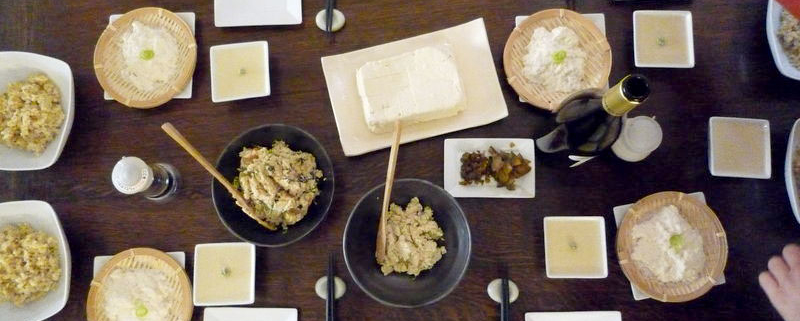
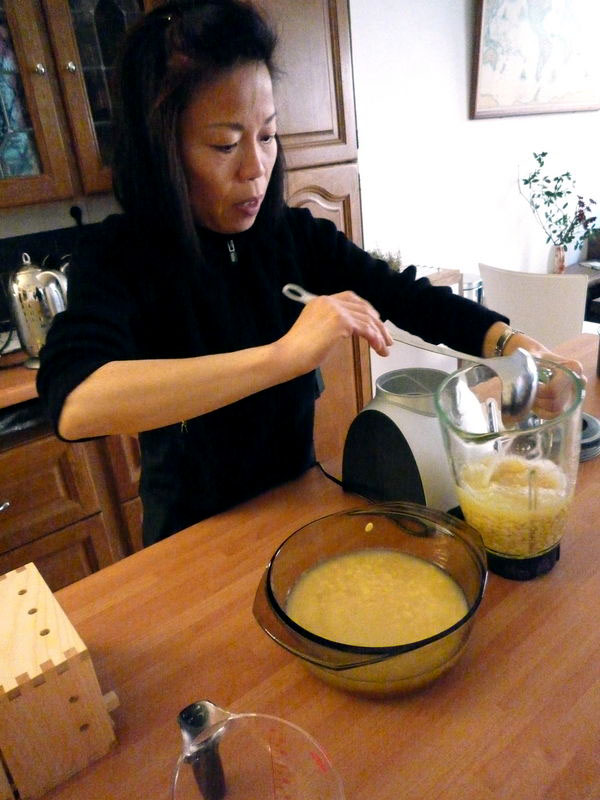
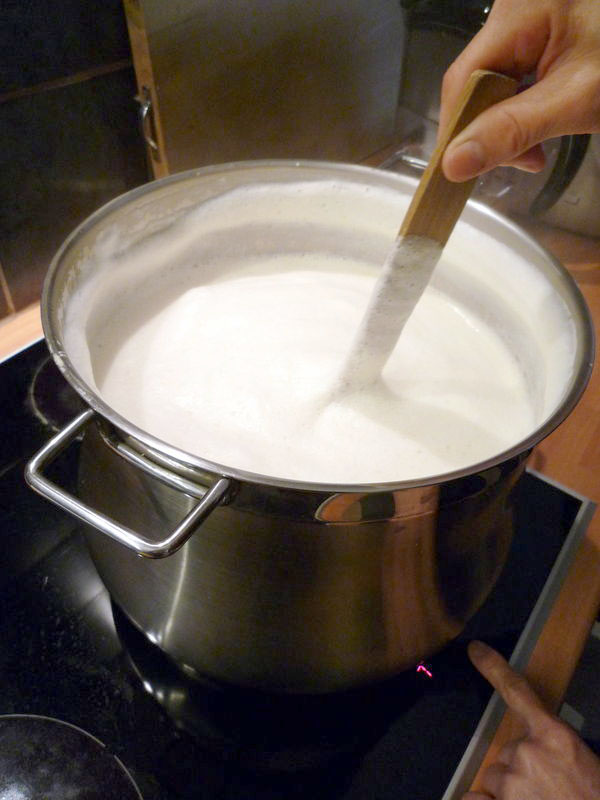
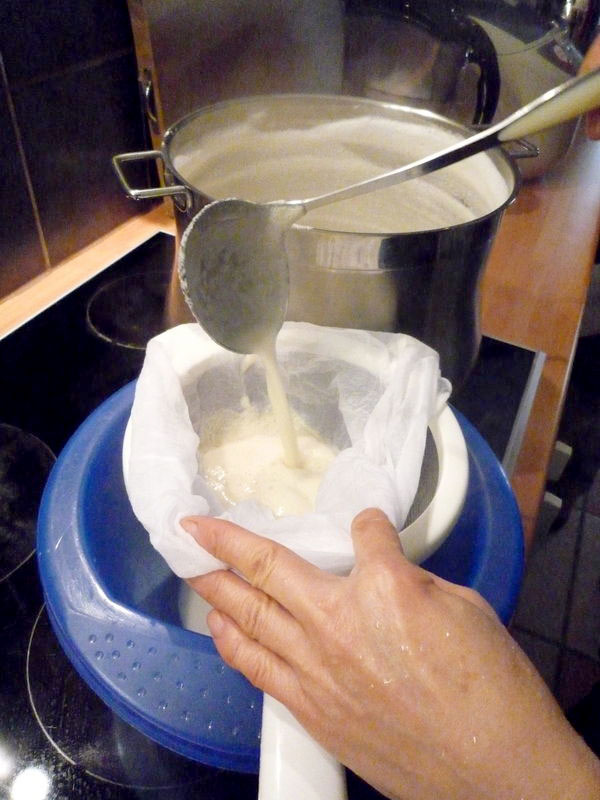
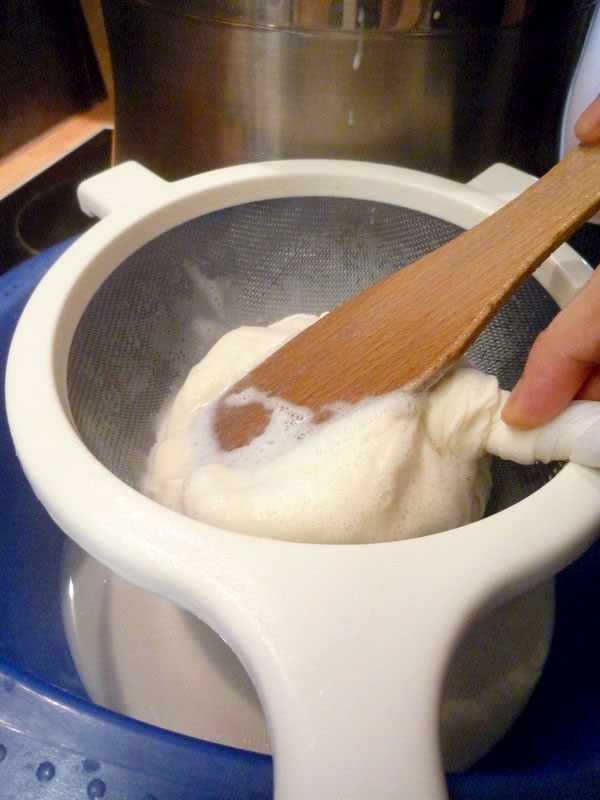
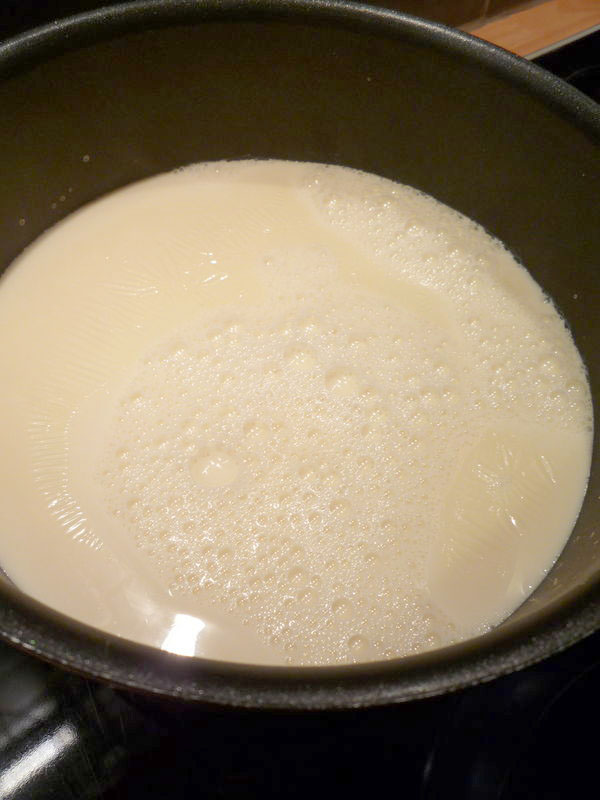
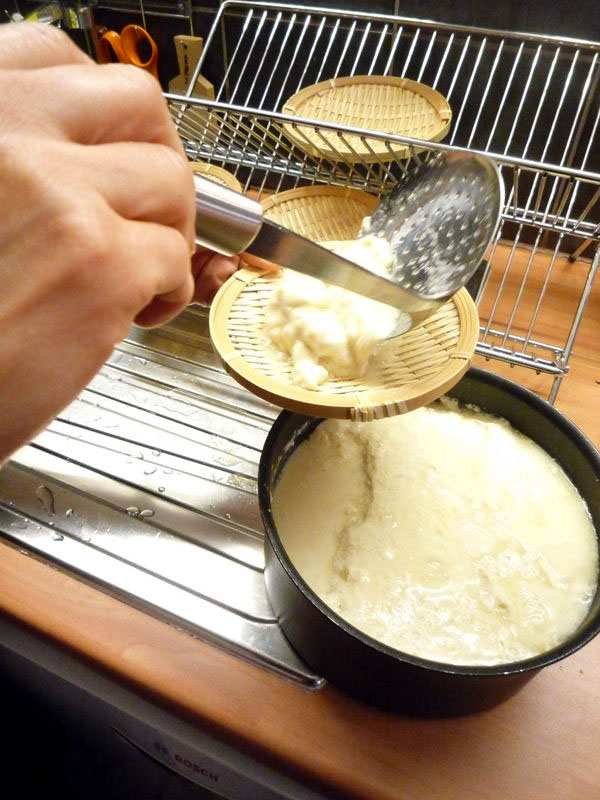
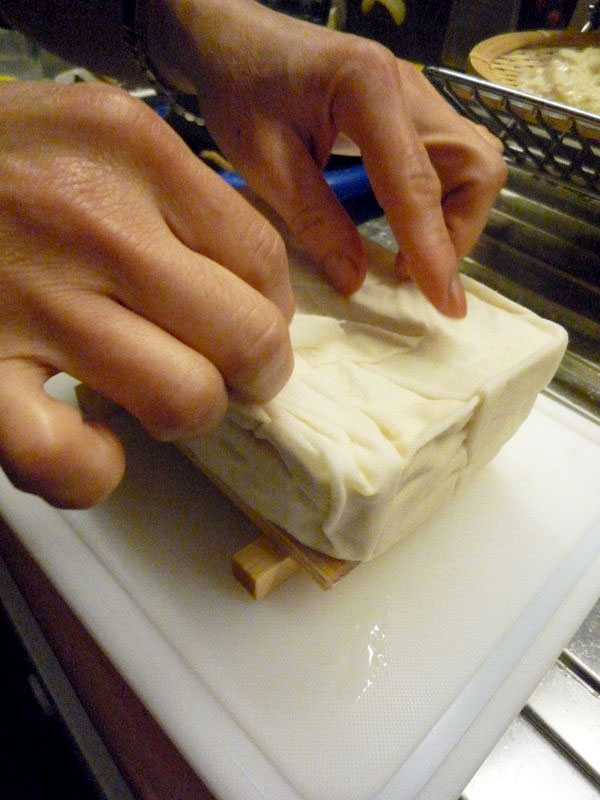
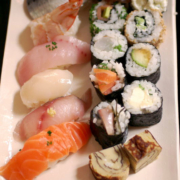


rosa,
i found you! your blog…i love it. just like other food blogs i have on my bookmarks. thanks for this post. i love tofu…i can only be vegetarian if i can consume tofu and tempeh 🙂 i used to eat these soy-based food a lot when i was growing up in indonesia, the only affordable and high protein source of food.
maybe one day i tempt to make tofu myself…i know where to find recipe and step-by-step ways to do it, thanks to you.
happy new year 2009! many more successes, joy and happiness…
ciao,
That’s funny Lucy, I also own that tofu book (along with its partner the miso book), though I have never used it yet!
Wendy, I think that freshly made tofu really doesn’t need much adornment – the Japanese definitely know what they are doing!
Teryll, it does seem to be much better – even the soy milk is delicious and creamy, unlike what I can buy in France.
Hello Vegetablej, I have read about people using lemon juice and, if it works, it seems a simple solution. Here nigari is available in organic food shops; you might also try a Japanese or other Asian supermarket.
I’ve made tofu in Japan, just once, though I’ve made tonyu and okara quite a few times. I didn’t use nigari, but lemon juice, which worked fine – the tofu had a fine texture and mild flavour. I wonder, though, where I might find the nigari in Canada. Any ideas?
Fascinating process, didn’t realize it was something that could be made in the privacy of one’s home. I bet the quality is ump-teen times better too.
I’m so very, very impressed! Wonderful instructions. I became a fan of tofu in Japan where it was often eaten with just soy sauce and chopped spring onions. So delicious in the heat of summer.
Rosa! Wow!!
How amazing is that? My best friend gave me a second hand copy of The Tofu Book, a 1970’s classic ‘healthfood’ book and you know, I’ve been contemplating making some tofu in the back of my mind for an age.
I have a free weekend…some soybeans…thank you.
Okara sounds fantastic – and have frantically jotted down notes for Etusko’s secret sauce, too.